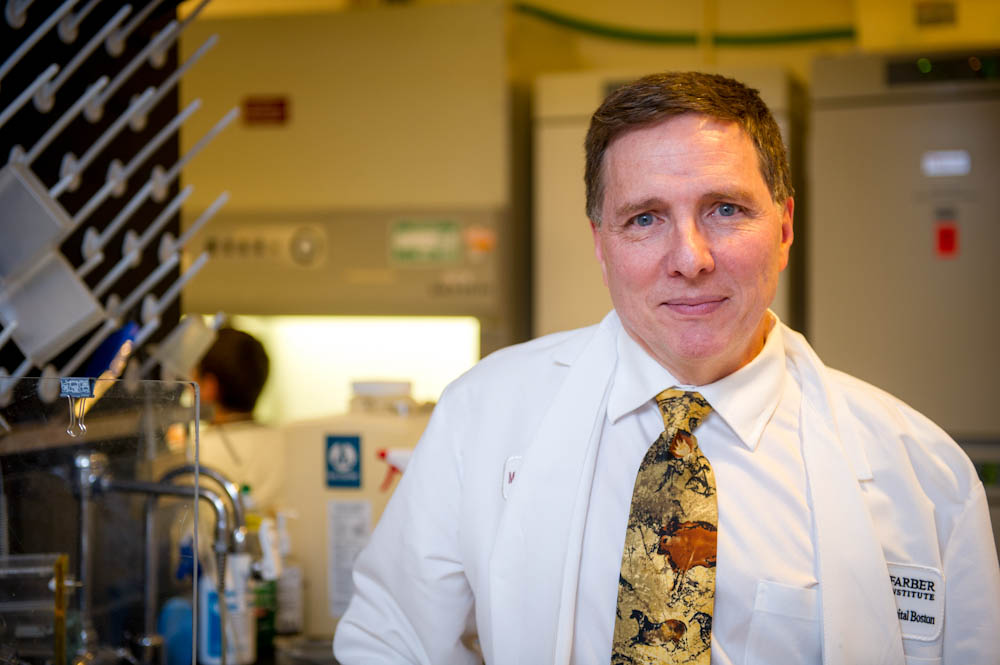Brain tumors are relatively rare for people of any age, but they can occur in both children and adults. In fact, tumors of the spinal cord and brain are the second most common types of cancer in children, after leukemia. But there are some key differences between brain tumors that occur in adults and those in children.

“Compared to adults, children are more likely to develop tumors in the lower parts of the brain – the brain stem and cerebellum – which are areas that affect movement and coordination,” says Mark Kieran, MD, PhD, director of Pediatric Medical Neuro-Oncology at Dana-Farber/Boston Children’s Cancer and Blood Disorders Center. “Adult tumors are more prone to develop in the upper area of the brain, which plays an important role in memory, language, and thought.”
Other key differences include:
- The most common types of childhood brain tumors are not the same as the most common adult brain tumors.
- Childhood brain tumors often bring different symptoms.
- Childhood brain tumors are less likely to change from low-grade (slow growing, less aggressive) to high-grade (fast growing, more serious).
- Children with brain tumors often have a better prognosis than adults with a similar condition, and most children and adolescents who are diagnosed with a brain tumor will survive.
- Treatment for childhood brain tumors usually differs from treatment for adults. For example, children with brain tumors may receive higher amounts of chemotherapy than adult patients would. Similarly, some newer treatment protocols are backing away from radiation therapy for young patients, based on recent research showing good long-term outcomes may be possible with only surgery and chemotherapy.
“Because of differences in the biology of the cancer, many childhood brain tumors respond well to chemotherapy,” Kieran says. “In addition, children generally tend to tolerate chemotherapy better than adults.”
Today, more than half of all children diagnosed with a brain tumor will be cured of the disease. Prognosis and long-term survival varies depending on the tumor type.
Read more:
Because a child’s brain is still developing, the treatments for brain tumors can result in more substantial side effects. Many children who are treated for brain tumors experience long-term problems, such as changes in intellectual and motor function. They can require ongoing care to help them function at school and throughout life
At Dana-Farber/Boston Children’s, experts help ease a child’s transition off treatment through the Stop & Shop Family Pediatric Neuro-Oncology Outcomes Clinic, which helps young patients manage the long-term effects of surviving a cancer of the brain or central nervous system. Dana-Farber also offers adolescent and young adult brain tumor survivors STEPS (“Success Through Education, Psychosocial support, and Socialization”), a support program that includes monthly events for patients and their parents or caregivers.

there is a area in va , ky boarder that has a lot of cancers showing up in small communities. Brain tumors in children seem to be common. Is this normal or should this be looked into it use to be my home and im worried that i will develope cancer. My brother has fourth stage prostate cancer now and ive had several friends pass away with cancer. My brothers best friend passed away couple years ago. Im very concerned about this who can i talk to. Thank you for your help
Dear Gloria —
We are sorry to hear about your concerns. Unfortunately, we cannot give out medical advice on this blog or over email. If you have concerns about your risk for developing cancer, it is important to bring up these concerns with your doctor. They can answer questions and discuss with you the best prevention plan. Wishing you all the best.